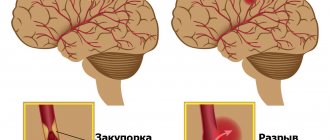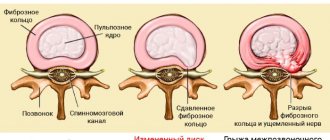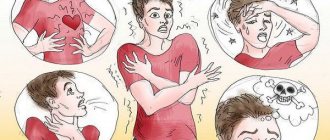Publication date: August 21, 2020
Sometimes, when you have to change your body position, darkening occurs in your eyes. And this is usually associated with various pathologies. Although this phenomenon is not always a danger signal. The eyes also become dark in a healthy person when there is overwork caused by heavy physical exertion or a stressful condition. Often the symptom of darkening in the eyes occurs when standing up. It may recur regularly or may be a one-time occurrence. Darkening in the eyes that appears sporadically does not indicate visual impairment. This is only a short-term deterioration in the perception of the environment. And the exact cause of darkening in the eyes can be determined by a doctor at a medical center by conducting diagnostic examinations.
Why do my vision get dark and my head feel dizzy?
If a person has excellent health, but from time to time his eyes darken, then this symptom is not always associated with any pathologies. Although it is impossible to exclude the disease 100%.
The main factors that lead to darkening of the eyes are:
- Lack of fluid in the body. To avoid health problems, you need to drink at least 2 liters of water every day.
- Prolonged hunger strike. A similar symptom is often observed in people who adhere to a lenten menu or are on a strict diet.
- Age-related changes in the body: menopause, old age, puberty.
- Adherence to bad habits. In this regard, smoking, alcohol abuse and drug use are dangerous.
- Excessive physical activity that is beyond human strength.
- High level of hemoglobin in the blood.
- Lack of vitamins and minerals.
- Diabetes mellitus and other endocrine pathologies.
- The period of bearing a child.
Why does it get dark before your eyes when you get up?
People often notice that their vision becomes dark when they suddenly rise from a place. The main reason for this symptom is a lack of oxygen in tissues and organs. This condition is characterized by the term hypoxia. Lack of oxygen causes orthostatic hypotension, which often develops with heart disease. If your eyes darken when getting out of bed, this may indicate that the person has low blood pressure.
Doctors often hear complaints of darkening of the eyes from patients who take medications such as:
- Vasodilators.
- Diuretics.
- Antidepressants.
With a sharp decrease in blood pressure, a person’s vision will always darken. In this case, symptoms such as:
- Weakness in the body.
- Decreased attention.
- Dyspnea.
- Memory impairment.
Darkening in the eyes should not be ignored. First you need to sit down so as not to get injured. Sometimes the darkness in the eyes goes away after the person calms down. When this phenomenon occurs frequently, you need to go to see a doctor.
It's about the pressure
However, an ophthalmologist is not the specialist who will help solve this problem. Doctors who hear about such a symptom confidently state that there is a problem with blood pressure. Hypotension, which is the culprit of this condition, is low blood pressure, the levels of which do not exceed 100 per 60 mmHg. Art. However, depending on the gender of the person, these indicators may vary slightly. So, for women, hypotension is diagnosed if the systolic pressure figures fluctuate at around 95 mmHg. Art., and for men - up to 100. At the same time, the characteristics of the body of a particular person are also added here.
What to do if your vision suddenly gets dark?
If your vision gets dark and your head begins to feel dizzy, then in order to cope with the attack, you need to follow the following recommendations:
- It is necessary to try to saturate the body with the maximum amount of oxygen. For this purpose, you can go outside, take a comfortable position, and breathe fresh air. If you are in a stuffy room, open the windows. If there are items of clothing on your neck or chest that restrict breathing, you need to get rid of them.
- To avoid falling, you need to sit down or lie down. It’s good if it is possible to raise your legs so that they are higher than your head. This way, blood will flow better to the brain.
- Be sure to use a tonometer and measure your blood pressure.
When a person clearly understands the cause of the attack that occurred, efforts need to be directed towards eliminating it. If a diabetic’s eyes get dark due to hunger, you can drink a glass of sweet water. This measure will increase blood glucose levels and cope with an attack.
If your head is spinning and your eyes are darkening due to prolonged exposure to the sun, then you need to go into the shade or into a cool room.
When the cause cannot be determined and the attack does not go away, an ambulance should be called. Doctors will examine the person and tell you how to cope with the existing problem.
Provided that the attack happened once, you should not panic. However, regularly occurring darkening of the eyes requires seeking medical help.
What not to do?
If a person does not know the cause of the attack, it is prohibited to take any medications. Otherwise, you may harm your health. You should not make sudden movements, you should not quickly turn your head or tilt it down, as this can lead to a fall. You definitely need to visit a doctor or call a medical team to your home.
Squatting and bending are prohibited. You need to take the most comfortable position possible. You should not start smoking or drinking alcohol after the attack is over.
Symptoms of migraine with aura and atrial fibrillation
It should be noted that experts distinguish between atrial scotoma as an independent disease and visual impairment that accompanies classic migraine. In the second case, visual symptoms form the so-called migraine aura, after which the end of a migraine attack occurs directly with a severe headache. If atrial scotoma itself is often limited only to visual disturbances, then the aura of classic migraine can be accompanied by other symptoms - general weakness, dizziness, numbness of the limbs, hearing and smell impairment.
The onset of an attack of scintillating scotoma is characterized by the appearance of a large pinpoint spot in the central part of the visual field. Gradually it “grows” and can move. Lighting spots may appear in blind spots.
Some patients note the appearance of ghostly objects on the periphery of the visual field; in others, sparkling images with a certain periodicity are replaced by loss of visual areas. In some cases, a person may become temporarily blind in one or both eyes.
General symptoms characteristic of ocular migraine are as follows:
- the appearance of flickering spots, flashes and glare;
- blurry outlines of objects;
- blurred vision.
In some cases, other symptoms may also occur:
- headache of a pulsating nature, concentrated in one half of the head (this symptom characterizes migraine with aura);
- visual hallucinations;
- dysfunction of the pupil;
- nausea and vomiting;
- the appearance of strabismus;
- drooping upper eyelid.
The symptoms of ocular migraine go away on their own by the time the attack ends. If it is a migraine with a visual aura, then immediately after it the person begins a long attack of headache in one half of the head.
Reasons you can't ignore
Sometimes a person’s vision becomes dark and dizzy due to various diseases, including:
- Vegetovascular dystonia. The head may not only feel dizzy, but also hurt. Painful sensations are localized in the temples and in the back of the head.
- Cervical osteochondrosis. At the same time, a person’s head becomes dizzy and darkens, most often in the morning and evening. The attack intensifies when turning the head, bending over, or changing body position.
- Migraine. People with migraines experience severe headaches and dizziness, and may experience tinnitus. Patients often complain of increased photosensitivity and nausea.
- Diseases of the inner ear, which may be associated with disturbances in the functioning of the vestibular apparatus.
- Previous injuries to the skull and brain.
- Trinitarian neuralgia. At the same time, the person’s vision becomes dark. Treatment must be immediate, as the disease can cause serious complications. Most often, antibiotics are required.
- Cancerous tumors. Attacks of dizziness and darkening of the eyes will occur on a regular basis.
- Orthostatic hypotension. This pathology is associated with somatic and neurological disorders, which leads to a sharp decrease in blood pressure. The body has difficulty adapting to rapidly developing hypoxia, which leads to an attack of dizziness and darkening of the eyes. Most often this situation happens after a night's rest. The severity of symptoms and their duration may vary. Sometimes patients even faint. In addition, sweating may increase, and pain may occur in the epigastric region. Psychosensory impairment is a severe manifestation of hypotension. The disease requires high-quality therapy.
- Anemia, accompanied by a decrease in the level of hemoglobin in the blood. Normally, the blood contains a large number of red blood cells (erythrocytes), which are responsible for transporting oxygen to tissues and organs. With anemia, the body will suffer from oxygen starvation. First of all, this affects the state of the brain. Therefore, anemia is always accompanied by attacks of dizziness. The patient's skin turns pale and weakness increases. The disease can be triggered by various pathologies of the digestive system, growing tumors, etc.
- People with strokes may develop dizziness and blurred vision. In this case, arteries in the brain rupture, which leads to tissue damage. This condition requires emergency medical care.
- Attacks of dizziness plague patients with cardiovascular diseases, as they always provoke a disruption of blood flow to the brain.
- Hypoglycemia with a drop in blood sugar levels causes a patient with diabetes to become dizzy and have dark vision. In severe cases, the person may even fall into a coma.
- Diseases of the organs of vision. Dizziness often develops with cataracts, as the deterioration of blood flow in the eyeball leads to a disruption in the transmission of information to the brain.
If a person feels dizzy all the time, and also gets dark in the eyes, you need to consult a doctor. Ignoring such symptoms will lead to serious consequences. The doctor will prescribe a comprehensive diagnosis to the patient and then select the necessary treatment.
Causes of headaches and numbness in hands
For headaches that are accompanied by numbness in the hands, it is important to make a timely diagnosis and determine the cause of these symptoms. They can be triggered by various factors, including poor circulation, low blood pressure and others. In addition, a sharp deterioration in health indicates the development of a stroke, rehabilitation for which is most effective when seeking medical help within the first two hours after the attack.
Stroke
Main article: Stroke
A stroke is an acute disruption of the blood supply to the brain. As a result of oxygen starvation, necrosis (death) of certain areas occurs, which is accompanied by disruption of nervous activity. Typical signs of a stroke are loss of consciousness, headaches, asymmetrical work of the muscles of the face and body, memory loss and deterioration of mental activity. These symptoms are individual for each patient and depend on the size and exact location of the affected area.
A stroke can occur without obvious symptoms, but cause long-term consequences and pose a danger to the patient’s life. To identify it in the early stages, there are several tests that can be performed at home:
- Face – when trying to smile, the corners of a person’s mouth rise unevenly;
- Hands - the victim will not be able to hold both hands in front of him for 10 seconds, one hand will fall down;
- Speech – speech becomes unintelligible, difficulties arise when trying to repeat a simple sentence;
- Time is a warning that if at least one symptom is present, a person’s life is in danger, and it is important to get to the hospital as quickly as possible.
Risk factors for stroke include old age, bad habits, excess weight, sedentary lifestyle, as well as chronic heart and vascular diseases. Thus, atherosclerosis is vascular damage that occurs due to the deposition of cholesterol and lipoproteins on the walls of the arteries. An unhealthy diet high in animal fats can cause deterioration in the elasticity of blood vessels and cause a stroke. Smoking and alcohol abuse are factors that also affect the intensity of blood supply to the brain. However, a stroke can be a consequence of hidden pathologies or occur suddenly in a young person with a healthy cardiovascular system.
Diseases of the neck and spine
Main article: Headache and neck pain
Neurological symptoms and headaches can also result from compression of the nerves in the cervical spine. Thus, the nerves of the cervical plexus innervate the occipital part of the head, so their damage will be accompanied by acute pain. Also in this area, nerves originate that carry impulses to the upper limbs. Headaches, numbness of the hands - these are a typical picture for a number of diseases:
- Osteochondrosis of the cervical spine (Main article: Headache with osteochondrosis of the cervical spine) is a chronic process in which there is a slow destruction of intervertebral cartilage. They become less elastic, thinner, and therefore cannot fully absorb shock during movement. This leads to insufficient mobility of the neck, pain, and a decrease in the clearance between the vertebrae. Bone segments compress blood vessels and nerves, which is accompanied by a deterioration in nerve conduction and blood circulation.
- Protrusion is a protrusion of the intervertebral disc on one side. Normally, it follows the shape of the vertebrae, but can be displaced as a result of injuries, weakness of the spinal ligaments, as well as uneven pressure on the vertebrae on both sides. Protrusions are treated with special gymnastics, massage, swimming, taking painkillers and muscle relaxants, and you may need to wear a collar. The disease progresses, and over time, if left untreated, progresses to the following stages. The last of them is intervertebral hernia, in which the dense fibrous membrane of the cartilage ruptures.
- Injuries and their consequences pose a danger to the health and life of the patient. Fractures of the vertebral bodies and processes, ruptures of ligaments lead to acute pain and require long-term rehabilitation. In the future, inactivity may persist in certain areas, increasing the risk of developing osteochondrosis and other chronic diseases.
Diseases of the cervical spine require long-term treatment. Its effectiveness will depend on regular exercise at home, as well as on compliance with other doctor’s recommendations. It is important to understand that in case of osteochondrosis, protrusions and hernias, it is necessary to monitor your posture throughout the day, dosage physical activity, and also not endure pain and attacks of numbness in the hands - with these disorders it is always worth making an appointment with a doctor for examination.
Diseases of the heart and blood vessels
Diseases of the cardiovascular system also lead to headaches, numbness in the hands and other alarming symptoms. They can occur in acute and chronic forms, be congenital and acquired. Thus, congenital heart defects, structural anomalies of valves and large vessels are accompanied by deterioration of blood circulation at any age. However, acquired disorders are more often diagnosed:
- Hypotension (See: Headache with low blood pressure) is a chronic decrease in blood pressure. Blood spreads slowly throughout the body, so the speed of blood flow in the upper extremities and head is significantly reduced. This leads to hypoxia (oxygen starvation) of tissues and deterioration of their innervation. For hypotension, complex treatment aimed at increasing blood pressure is prescribed.
- Atherosclerosis (See: Headache as a symptom of atherosclerosis) is a metabolic disorder in which deposits of cholesterol and lipoproteins appear on the inner walls of the arteries. These substances narrow the lumen of blood vessels, thereby impeding blood flow. In the future, they can form plaques and completely block the arteries, posing a danger to the patient’s life. Circulatory disorders are diagnosed using vascular ultrasound with the addition of a contrast agent. This allows you to determine the exact location of the damaged area and make a diagnosis. As treatment, a diet low in fat and cholesterol is prescribed, as well as drugs that stimulate its elimination.
- Aneurysm is a pathological expansion of a section of blood vessels (usually arteries) with the formation of a pocket filled with blood. At the same time, their walls become significantly thinner, and there is a risk of their rupture, especially with increased pressure. In the presence of an aneurysm, neurological symptoms, frequent headaches, and numbness of the hands occur. It is important for patients to monitor their well-being; according to the doctor’s decision, a planned operation is performed to restore the damaged area of the vessel.
Chronic diseases of the heart and blood vessels, if left untreated, can cause a stroke. Thus, narrowing of the lumen of the arteries and hypotension are provoking factors for the development of ischemic stroke, which occurs during prolonged hypoxia of parts of the brain. An increase in pressure to critical levels can provoke a hemorrhagic stroke - it occurs when a vessel ruptures and is accompanied by cerebral hemorrhage. According to statistics, hemorrhagic stroke is more life-threatening, and rehabilitation in this case is less effective, but the prognosis is determined individually, depending on the degree of damage and the exact area of the brain.
Diagnostic methods
A person who goes to the doctor with complaints of dizziness and darkening of the eyes needs to be prepared for the fact that he will be prescribed a lot of tests. Only a comprehensive diagnosis will allow us to establish the true cause of the attacks.
Possible diagnostic measures:
- Determination of pressure level.
- Ultrasound of the vessels of the neck and brain.
- MRI of the brain.
- Encephalography.
- Computed tomography of the cervical spine. In addition, this test can detect cancerous tumors.
- Fundus examination, eye pressure measurements.
- Donating blood for general and biochemical analysis. Be sure to determine the level of cholesterol, hormones and hemoglobin in the blood.
- Performing bacterial cultures and blood draws to determine viral and bacterial infections, as they can lead to disruption of brain function.
- Performing neurological tests.
Cases from practice
Male, 23 years old, graduate student.
In 2009, a young man applied to the Clinical Center for Autonomic Neurology. He studies and works at the university. There is a lot of intellectual load, he reads a lot in print and from the computer. Poor vision: myopia, -4.0 diopters. But I always saw well into the distance.
After entering graduate school, I began to notice that “the letters literally blur before my eyes.” The attacks occurred several times a week for 3-4 minutes while reading. This has been going on for the past 2 months. Sometimes a “veil” appeared when focusing sharply on distant objects. There was a suspicion of cataract, but the diagnosis did not confirm it. Visual acuity remained stable. In addition, since the age of 17, the patient had been bothered by a constant feeling of heaviness in the head, rarely by headaches, as well as tension in the muscles of the neck and back.
Thermal imaging examination revealed disturbances in the functioning of the cervical autonomic nodes and a number of others. After two courses of treatment, the young man felt completely healthy, “like he had never felt before”, “his head became light.” Problems with temporary loss of visual acuity ceased to bother me after the first course of treatment. Tension in the muscles and heaviness in the head completely disappeared in the 2nd month of the recovery period after the second course of treatment.
Male, 42 years old, worker.
The patient contacted us in 2013. After the first attack of autonomic crisis (panic attack) 10 years ago, he developed numerous symptoms of autonomic disorder: heart pain, rapid heartbeat, shortness of breath, problems with blood pressure, stomach, anxiety, dizziness, etc.
After the first panic attack, I immediately went to the doctor, passed all the tests, and underwent a full examination at the cardiology center. The examination showed that the patient is completely healthy. I tried to be treated by a neurologist, visit a psychotherapist, and be treated with various medications - to no avail. For years, the patient tried to fight on his own with sudden attacks of fear, which most often arose in traffic jams, or when the patient, an auto mechanic by profession, was about to repair a car.
Among other symptoms, the man was often bothered by attacks of vision loss and dizziness. If I turned my head back sharply enough and then looked forward again, which often happened while in a moving car, “everything swam before my eyes,” “I fell into some kind of spatial vacuum,” and tinnitus arose.
After the very first treatment sessions at the center of autonomic neurology, anxiety attacks began to bother the patient less frequently and were very short-lived (a few seconds). After the second course, most of the symptoms of autonomic disorder were completely relieved. At the end of the third course of treatment, which the patient considered necessary to undergo to consolidate the result and overall good health, he “felt great.” He did not make any further complaints.
Treatment
Sometimes, in order to get rid of attacks, it is enough to simply change your eating habits, as well as follow a routine and devote a sufficient amount of time to sleep. Although in some cases dizziness is caused by dangerous conditions that require serious treatment.
Drugs that can be prescribed to the patient:
- Antibiotics and anti-inflammatory drugs. They are prescribed to treat otitis media, as well as infections that affect the brain.
- Antidepressants, sedatives and drugs that normalize blood flow. This treatment is indicated for patients with VSD, with surges in blood pressure, as well as for people who have suffered severe stress or are suffering from depression.
- B vitamins, calcium antagonists and drugs that improve brain nutrition. Such drugs are indicated for use by patients with hypoxia and people engaged in heavy mental work.
- Massage, physiotherapy, as well as taking medications that normalize vascular tone are indicated for patients suffering from osteochondrosis or other diseases of the cervical spine.
- Hormones should be taken by patients with disorders of the endocrine system.
- Iron supplements are prescribed to patients with anemia.
The dosage of medications, as well as the duration of the course of treatment, is determined by the doctor, based on the individual characteristics of the course of the disease.
Ocular migraine - how to treat it?
If a patient is diagnosed with ocular migraine, treatment should be prescribed by a neurologist. As a rule, therapy for this disease is carried out in two directions:
- relief of an acute attack;
- relief and prevention of future attacks of atrial fibrillation.
You have characteristic symptoms and you feel that an ocular migraine is beginning - how to treat an acute attack?
First aid for an ocular migraine is to remove the trigger if possible (for example, a source of flickering light) and go to bed. You should be in a well-ventilated, darkened area. Curtains must be drawn, artificial light must be turned off so that it does not irritate the eyes. You can massage your temples, drink strong tea or coffee.
After consulting your doctor, you can take painkillers, antispasmodics or anti-inflammatory tablets. To treat ocular migraines, sedatives and drugs that dilate blood vessels in the brain are often prescribed.
Recently, in medical practice, triptans have been widely used to treat atrial scotoma - drugs that have a pronounced vasoconstrictor, anti-inflammatory effect, and reduce the sensitivity of the trigeminal nerve. They are prescription medications and can only be purchased with a doctor's prescription.











